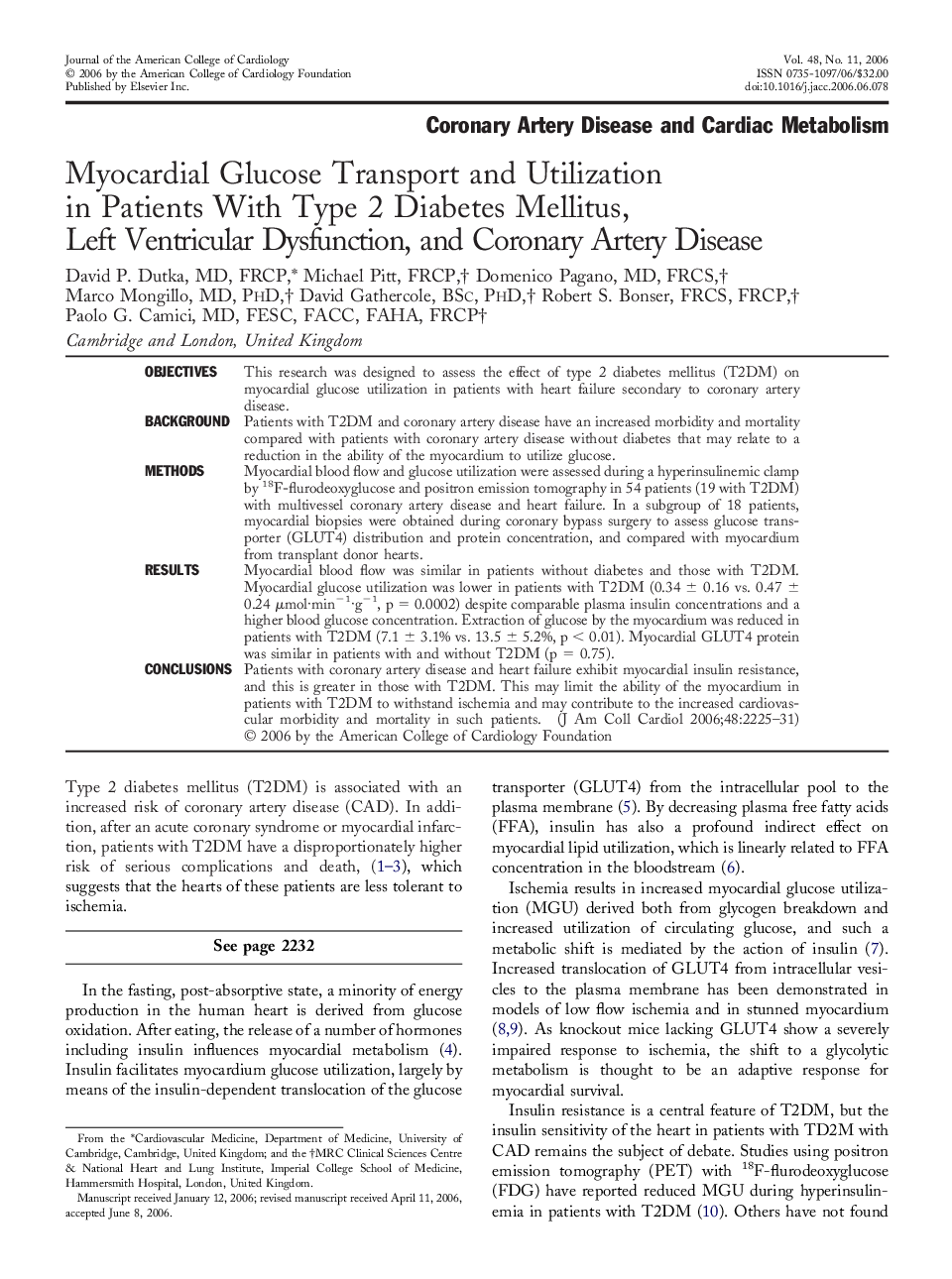| Article ID | Journal | Published Year | Pages | File Type |
|---|---|---|---|---|
| 2951953 | Journal of the American College of Cardiology | 2006 | 7 Pages |
ObjectivesThis research was designed to assess the effect of type 2 diabetes mellitus (T2DM) on myocardial glucose utilization in patients with heart failure secondary to coronary artery disease.BackgroundPatients with T2DM and coronary artery disease have an increased morbidity and mortality compared with patients with coronary artery disease without diabetes that may relate to a reduction in the ability of the myocardium to utilize glucose.MethodsMyocardial blood flow and glucose utilization were assessed during a hyperinsulinemic clamp by 18F-flurodeoxyglucose and positron emission tomography in 54 patients (19 with T2DM) with multivessel coronary artery disease and heart failure. In a subgroup of 18 patients, myocardial biopsies were obtained during coronary bypass surgery to assess glucose transporter (GLUT4) distribution and protein concentration, and compared with myocardium from transplant donor hearts.ResultsMyocardial blood flow was similar in patients without diabetes and those with T2DM. Myocardial glucose utilization was lower in patients with T2DM (0.34 ± 0.16 vs. 0.47 ± 0.24 μmol·min−1·g−1, p = 0.0002) despite comparable plasma insulin concentrations and a higher blood glucose concentration. Extraction of glucose by the myocardium was reduced in patients with T2DM (7.1 ± 3.1% vs. 13.5 ± 5.2%, p < 0.01). Myocardial GLUT4 protein was similar in patients with and without T2DM (p = 0.75).ConclusionsPatients with coronary artery disease and heart failure exhibit myocardial insulin resistance, and this is greater in those with T2DM. This may limit the ability of the myocardium in patients with T2DM to withstand ischemia and may contribute to the increased cardiovascular morbidity and mortality in such patients.
